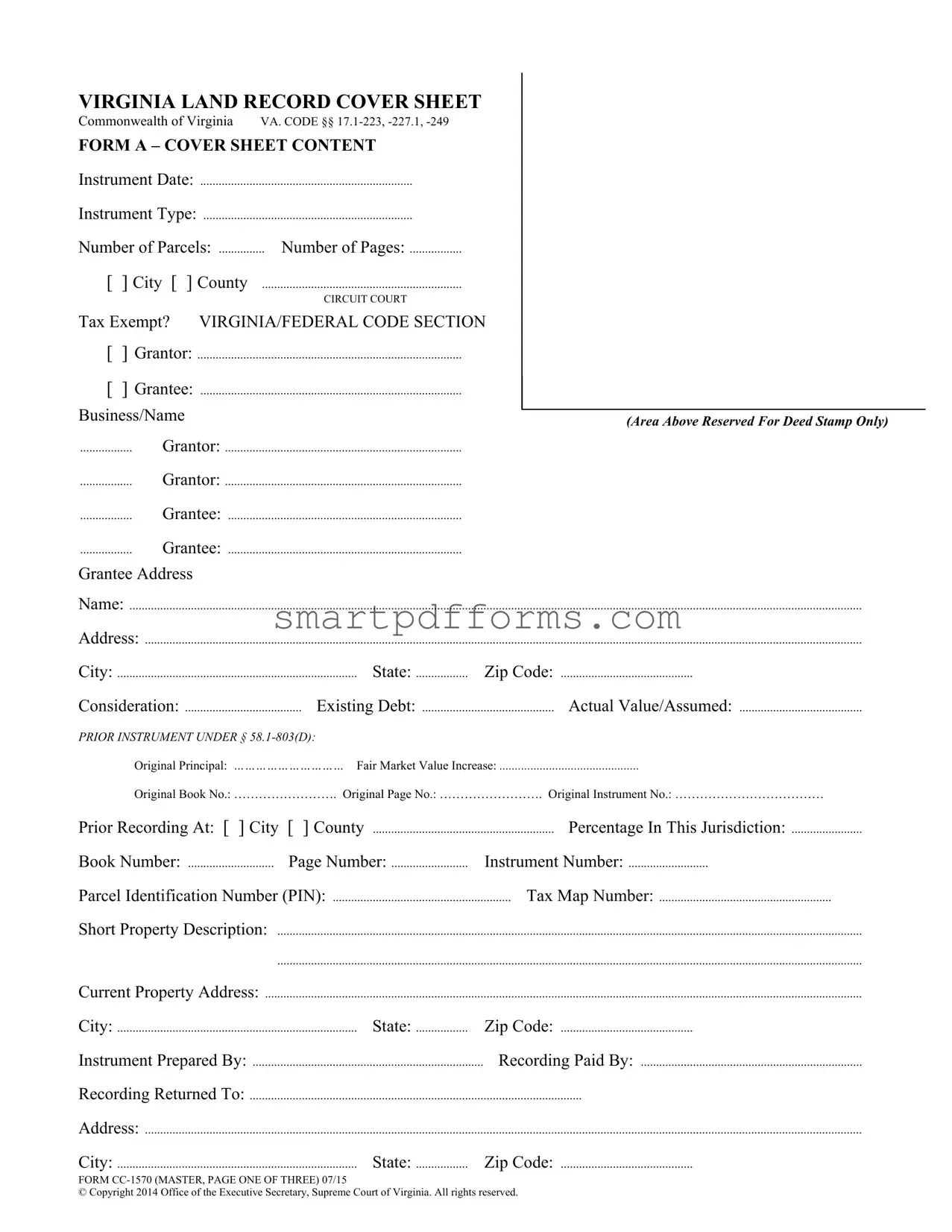What is the Virginia Land Record Cover Sheet?
The Virginia Land Record Cover Sheet is a document required by the Commonwealth of Virginia for recording various types of land records in the Circuit Court. This form includes essential details about the transaction, such as the type of instrument, the parties involved (grantor and grantee), property description, and financial considerations.
Why is it necessary to use this cover sheet?
It is mandated under VA. CODE §§ 17.1-223, -227.1, -249 for the organized and consistent recording of land records. It helps in the efficient processing and retrieval of records within the state's legal system. This cover sheet ensures that all necessary data are systematically captured at the time of recording.
What types of information are required on the cover sheet?
The cover sheet requires various details including, but not limited to, the type and date of the instrument, the number of parcels and pages, information about the grantor(s) and grantee(s), property description, consideration value, existing debt, and related tax information.
Are there different forms within the Virginia Land Record Cover Sheet?
Yes, there are three forms within the cover sheet document:
- Form A – Cover Sheet Content
- Form B – Additional Grantors/Grantees
- Form C – Additional Parcels
Each serves a specific purpose to accommodate additional details that might not fit into the initial cover sheet.
How do I determine if a transaction is tax-exempt under this form?
To determine tax exemption, refer to the VIRGINIA/FEDERAL CODE SECTION provided on the form. This section helps identify if a transaction qualifies for exemption based on federal or state law. It is advisable to consult with a legal professional or the local tax office for accurate classification.
What is meant by "Instrument Type" on the form?
"Instrument Type" refers to the kind of legal document being recorded, such as a deed, mortgage, lease, lien, etc. This categorization helps in identifying the nature of the transaction and assists in the proper filing and indexing of the document within the land records system.
Can more than one grantor or grantee be listed on the cover sheet?
Yes, Form B is specifically designed to list additional grantors or grantees if there are more than provided spaces on Form A. This ensures that all parties involved in the transaction are adequately recorded.
What should be done if the property involved spans multiple parcels?
If the transaction involves multiple parcels, Form C should be used to list additional parcel information. This includes parcel identification numbers, tax map numbers, and descriptions for each parcel involved.
Who is responsible for preparing and submitting this cover sheet?
The cover sheet is typically prepared by the party or their legal representative who is submitting the land record for recording. The form clearly asks for the preparer's information, indicating responsibility for accurate and complete submission.
Where can I obtain the Virginia Land Record Cover Sheet?
The form can be downloaded from the website of the Office of the Executive Secretary, Supreme Court of Virginia, or picked up in person at your local Circuit Court's office. Additionally, legal professionals often have access to these forms and can assist in their preparation and submission.



